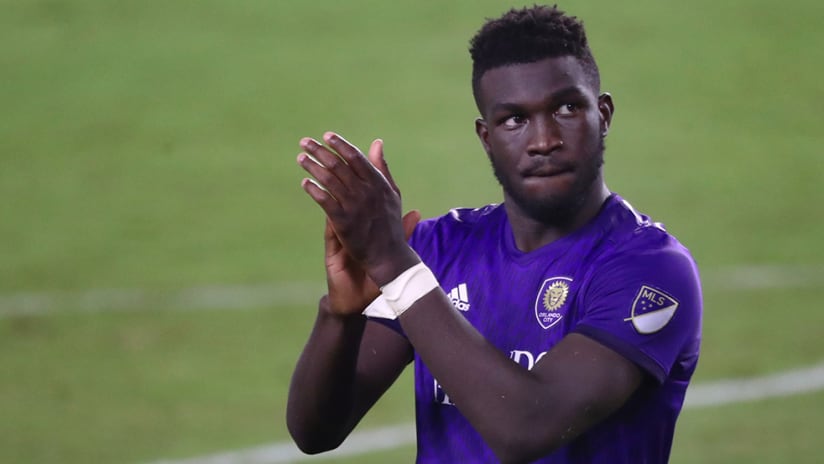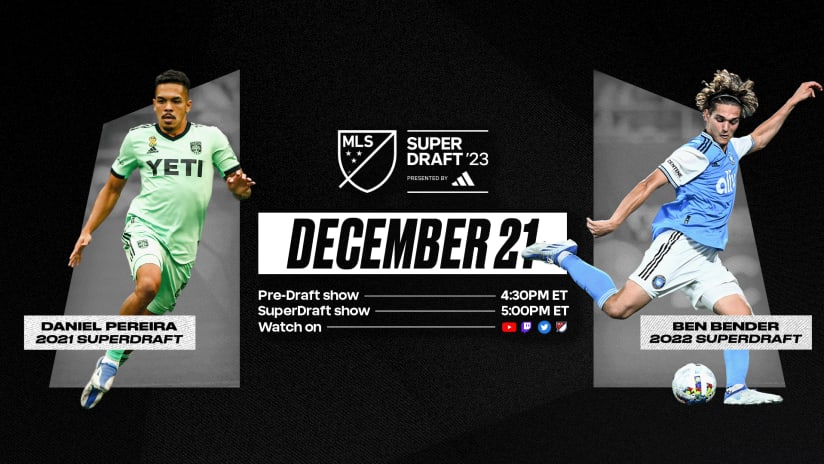The SuperDraft is irrelevant, right?
That’s a widely-held line of thinking among fans, and even some decision-makers, around MLS. This week’s announcement that the 2021 edition will shrink from four rounds to three, which follows the decision to make it an online-only event last year, would seem to fit into that narrative.
Especially when you consider how heavily the 2020-21 NCAA season has been disrupted by the COVID-19 pandemic: Many major conferences and programs, the ACC being the most notable exception, have shut down for the usual fall season and will play a truncated slate in the spring, with the NCAA having already moved the tournament and College Cup to May.
It’s a bit more nuanced than that, however. The presence of four NCAA veterans in this season’s MLS Best XI and standout performances from recent draft picks like Jeremy Ebobisse, Daryl Dike, Henry Kessler and Chris Mueller illustrate as much. There’s still plenty of talent to be found in the college game, and the league – particularly its budget-conscious clubs – is eager to remain tapped into it even as Homegrowns and overseas signings hog more of the spotlight.
Highlights: Chris Mueller's standout 2020 season
“If you’re not what I would say is a high-flying, spending team, maybe Atlanta, Miami, LAFC, you’ve got to be digging under rocks, and using all your resources you can to find the next-best player at a price that you can afford,” Sporting KC Director of Player Personnel Brian Bliss told MLSsoccer.com. “So we do put a little bit extra effort into that area … That's a core part of our business.”
Kansas City are leading the way in this respect, having hosted their own three-day combine for college players last month that was also attended by scouts from other MLS clubs. Others are holding similar events, in many cases in conjunction with their USL second teams, which have become a very useful tool in grooming players who aren’t quite ready for the top flight straight out of college.
With a few striking exceptions like Jack Elliott and Dominique Badji, the most pro-ready prospects are increasingly clustered in the early stages of the draft’s first round, which makes high picks way more valuable. Just this week, the Colorado Rapids sent a relatively hefty $125,000 in allocation money to Chicago to acquire next month’s No. 6 overall slot.
“The SuperDraft continues to be a valuable mechanism to acquire players in this league and I think every single year you see a number of players that come through and contribute to teams,” said Rapids EVP and GM Padraig Smith in a conversation with reporters this week.
“Each case needs to be judged on its own merits,” he added, citing 2019 Rookie of the Year Andre Shinyashiki as a prime example. As a college standout at the University of Denver and participant in the Rapids’ Under-23 program, the Brazilian was well-known to the club before impressing in MLS right out of the gates.
Watch: Andre Shinyashiki made an instant MLS impact in 2019
“Other players may take longer and I think this is where we need to be smart in terms of the developmental pathway and the plan that we put in place for each of these players. So it really is dependent on the individual themselves, and how you see their progression.”
That’s why the draft – and its Generation adidas accompaniment – will continue, albeit in a smaller, more low-key format. And while the pandemic is complicating the process, it may prove a useful opportunity to evolve in the long run.
Players drafted this winter will get to decide whether they join their MLS clubs right away for 2021 preseason, or stay in school and hunt a national championship before reporting for duty come summer. Based on conversations with decision-makers around the league, it sounds like the most impressive ones will be informed their abilities make them strong candidates to address immediate needs, whether that be via GA status, a pre-draft contract offer or other enticements.
Conversely, those considered not quite ready can learn about why they might not want to pull the plug on their NCAA career prematurely.
“We're going to wait and see what the level of interest and opportunity there is for each of them at the MLS level,” University of Maryland head coach Sasho Cirovski told MLSsoccer.com in a recent discussion about this topic. “If there's a team that feels that they're ready to commit to one of our players, and there's a great chance of getting a contract, then it's probably a good chance that they'll skip the senior season and go into training camp whenever MLS starts.”
This may well become the norm. There’s a real possibility men’s NCAA Division I soccer will adopt a two-semester spring/fall season at some point, with a Cirovski-led coalition advancing a proposal dubbed the “21st Century Model” that was set for a key NCAA vote in April only to be tabled due to the pandemic.
“The dialogue has been really good recently with MLS in trying to come up with different solutions, especially as we hopefully get into the 21st Century Model and we're going to be dealing with this situation on a more regular basis,” Cirovski said. “We're working hard on trying to find a pathway to MLS through the college game that is a win-win for everybody. Now we’ve sort of had to jump-start the conversation of how we're going to handle that with us having a spring season.”
A three-time NCAA national championship winner and respected developer of future pros, Cirovski and his fellow college coaches are working with their players to chart a course through the current situation, from helping foreign players navigate the student visa process to finding ways for December graduates to remain eligible for the spring campaign.
“Also, these kids have not played for almost 16 months in a real game, and MLS has not been able to track them or see them,” he noted. “So in some cases I can see a situation where MLS drafts a kid and then they want to monitor them in the college season, and then as soon as the season finishes, join their respective MLS or their reserve/USL squad immediately. So I think that you're going to see a wide array of decisions being made.”
MLS technical staffs’ priority is not only identifying potential contributors in the college game, but maximizing their growth at every phase in their progression up the proverbial pyramid so that they’re as complete as possible when they get their chance to join a first-team environment.
If you’re drafted by a team in January, you may have a matter of days to learn about that team and its plans for you, and whether you’re ready to put what’s left of your college coursework on hold in order to leap into the pro crucible and try to earn a roster spot. The goal is to make that a less daunting situation for the individuals and their families, and that’s helped by the growth of stronger developmental infrastructure (think bigger rosters, loan stints, USL second teams, better training facilities and possibly a new reserve league) across MLS.
“There is flexibility there,” said Smith. “There's a lot of different options, and ultimately if you take a very holistic approach to it I think you can always put in place the right developmental pathway so that they're going to be in an environment where they can reach their maximum potential.”
Since different players mature along different timelines, and there won’t be professional youth academies covering every nook and cranny of this enormous continent anytime soon, reports of the SuperDraft’s death may prove greatly exaggerated.
“There's players in that system,” said Bliss. “And you’ve just got to be willing to be patient and dig around a little bit.”














